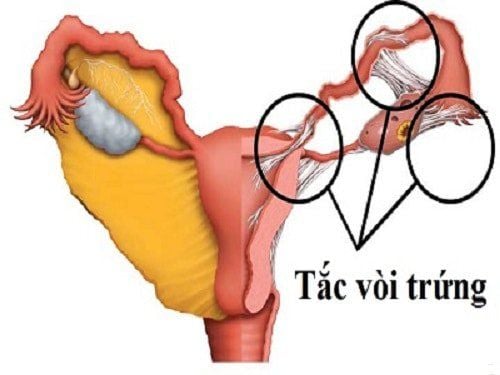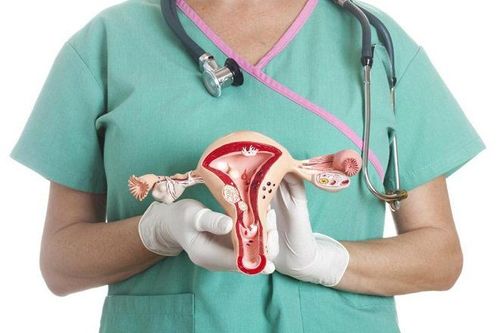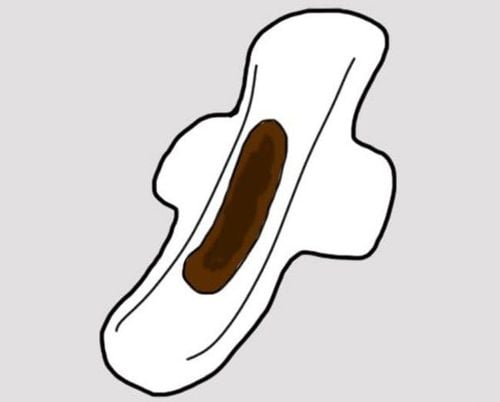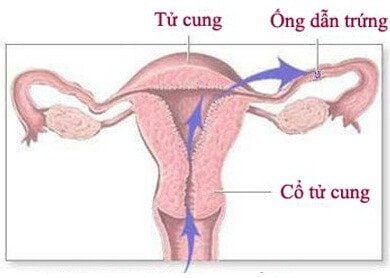This is an automatically translated article.
Laparoscopic surgery to remove adhesions and unblock fallopian tubes is a common treatment method indicated in cases of blocked fallopian tubes, affecting fertility, increasing the risk of infertility in women. .
1. When to open fallopian tube surgery?
To diagnose the blocked fallopian tubes and choose the treatment method, the patient will have a hysteroscopy - the fallopian tubes with the support of contrast material. The diagnostic results indicate whether there is a blockage of the fallopian tubes. However, some cases of false-positive results cannot be excluded, that is, despite the conclusion that tubal occlusion is present, it is not. The cause of false positives is due to the physiological contraction of the body during contrast injection.
Laparoscopy is a surgical method that allows the doctor to fully and accurately observe the uterus, uterine cavity, and the ear canal, so laparoscopic surgery is first used for diagnosis. Once it has been determined that there is a blocked fallopian tube, the doctor will assess the extent of the patient's damage. If it is mild, ie the ear is less sticky, and mobile, the doctor will perform tubal reconstruction and check the ability to communicate. In case of too severe damage, it is recommended to perform cauterization or cut off both ears to reduce the risk of future ectopic pregnancy during IVF.
During laparoscopic surgery, the uterus will be evaluated for both size, uterine lumen status, septum or adhesions, in order to identify factors that may cause miscarriage or premature birth. In addition, both sides of the ovaries will also be evaluated for size, tumor or ovulation.
Laparotomy of fallopian tubes is usually indicated when:
Contrast-enhanced hysterosalpingogram detects tubal obstruction; Fallopian tubes fill with water or pus, causing adhesions; Request from the patient, want to open the fallopian tube after ligation to prevent pregnancy.

Mổ thông tắc vòi trứng thường được chỉ định khi có tình trạng tắc nghẽn vòi trứng
2. Laparoscopic surgery to treat blocked fallopian tubes
Laparoscopic treatment of tubal adhesions depends on the location, degree of blockage of the fallopian tubes and the patient's condition. Before the surgery, the patient will have a general examination to assess whether they are healthy enough to perform or not, in order to minimize the risk of complications and complications. Based on the specific condition of each patient, the doctor will advise the most effective treatment method.
Currently, there are 2 methods of laparoscopic surgery applied to blocked fallopian tubes, which are:
Laparoscopic surgery to unblock fallopian tubes, fallopian tubes: Usually performed for cases of blocked fallopian tubes. proximal (accounting for about 10-25% of tubal pathologies). The doctor conducts a catheterization of the fallopian tubes under the guidance of a laparoscope, which helps to remove debris and separate adhesions in the lumen of the fallopian tubes. The success rate of this method can be up to 85%; Laparoscopic surgery to remove adhesions of fallopian tubes and fallopian tubes: For cases where the fallopian tubes are attached due to inflammation, which can easily lead to ectopic pregnancy, the patient needs to undergo surgical dilation and removal of the fallopian tubes and tubes. egg to make sure sperm and egg can circulate normally without getting stuck again.
3. Note for patients with laparoscopic tubal surgery

Khác với mổ hở, mổ nội soi thông tắc, gỡ dính vòi trứng thường không đòi hỏi người bệnh phải nằm viện quá lâu
Unlike open surgery, laparoscopic surgery to unblock and remove fallopian tubes usually does not require the patient to stay in the hospital for too long. Accordingly, the recovery time to discharge from the hospital is usually after a few days or at least a few weeks, the patient can return to normal activities.
One of the things women are most concerned about when performing laparoscopic surgery to remove adhesions and unclogging fallopian tubes is the success rate and the risk of complications. In order to improve the effectiveness of treatment, increase the ability to conceive naturally, and at the same time limit dangerous complications, patients should note:
Choose a reputable medical facility with a team of obstetricians and gynecologists. good, rich experience, especially in the field of surgical treatment; Keep the spirit always comfortable, optimistic, limit stress, excessive anxiety because it can negatively affect the treatment results; After surgery to unblock and remove the fallopian tubes, the patient should leave it alone for 3 months, if not, then plan for infertility treatment. During this time, a woman should keep calm and avoid negative worries because it can easily affect the functioning of the ovaries. Patients can visit the doctor who performed their surgery or the infertility department for advice on treatment options. If the blockage of the fallopian tubes is too severe, it is likely that in vitro fertilization will be required.
Once a woman has been diagnosed with a blocked fallopian tube, she should see a doctor and start treatment early. Because for women, the quantity and quality of eggs will gradually decrease over time, so the older you get, the more likely you are to conceive naturally.
Patients with blocked fallopian tubes can go to Vinmec International General Hospital for examination, diagnosis and treatment. There are full technical facilities as well as professional qualifications to effectively implement the treatment methods of blocked fallopian tubes, including laparoscopic surgery to unblock and remove the fallopian tubes. The team of specialists in Obstetrics and Gynecology at Vinmec are well-trained, experienced, complete and modern medical equipment system, professional service quality, effective in diagnosis and treatment. maximum for the patient.
Please dial HOTLINE for more information or register for an appointment HERE. Download MyVinmec app to make appointments faster and to manage your bookings easily.













